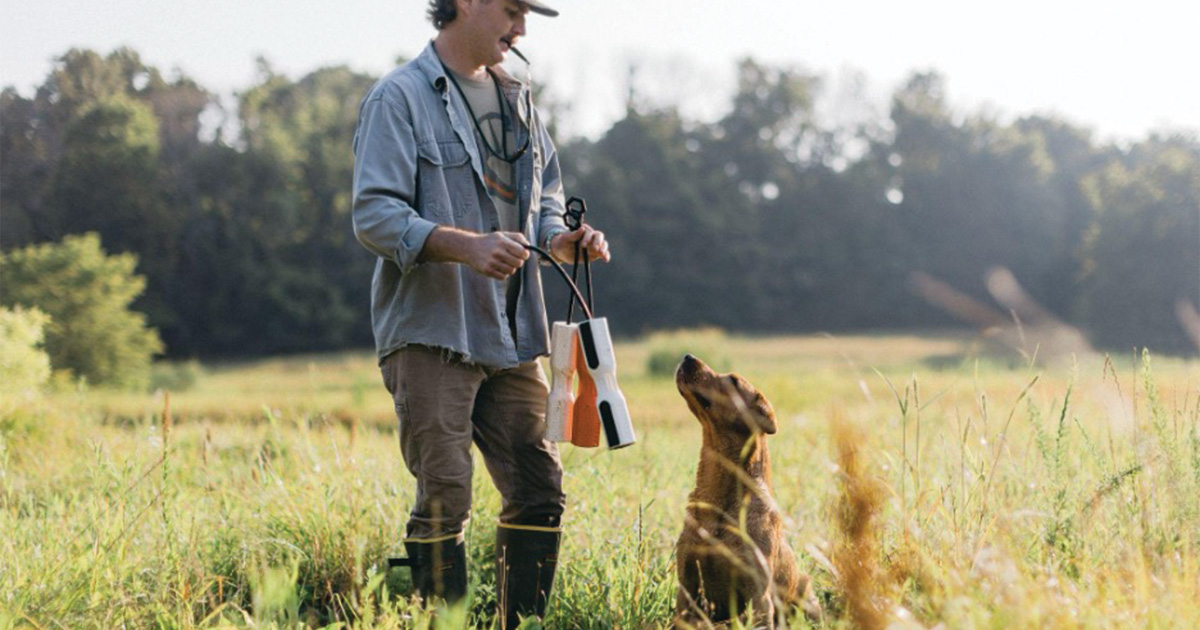Best Bumper Drills for Retrieval Training
All of these drills aim to build trust between you and your dog and get them ready for the field
All of these drills aim to build trust between you and your dog and get them ready for the field
This article is provided by GUNNER Kennels as part of a Sponsored Content program. Ducks Unlimited editorial staff played no role in creating this content.
By Addison Edmonds, founder of GUNNER (DU Proud Partner)

When I was in college I got a dog who would change my life: Gunner, a chocolate lab who absolutely lived to retrieve. He inspired me to start GUNNER nearly 10 years ago. We launched the company with the G1™ kennel, and at the time I also wrote down “Man’s Best Bumper” on my goal board – because I knew that the standard tool was a frustrating, cheap product that I could make better.
In 2023, GUNNER introduced a bumper that’s engineered to make the dog owner’s life easier, providing unmatched durability and versatility.
I won’t call myself an expert or a professional trainer, but I’ve spent a lot of time around pros and training my own dogs, and I’ve spent just as much time in R&D creating the bumper. These are my top drills to get started with retrieving with your dog this spring (ideally with the GUNNER bumper).
Keep in mind that everyone trains differently, but all of these drills aim to build trust between you and your dog and get them ready for the field.
Addison’s Bumper Pick: Orange
This is the first step I taught my current dog, Chevy – I’ve always called it “dead bird.” Sprinkle some dog food or treats in an area of your yard, let your dog run around, and when they get somewhat close to the kibble, start saying, “dead bird.” This will teach them to put their nose to the ground and start hunting.
Once your dog gets the hang of it, switch to using a bumper instead of food. I like to put feathers in the bumper, hide it when he’s not looking, and send him on a blind retrieve. When he starts getting close I’ll say, “dead bird,” just like when we did the drill with the food.
I like to use the orange bumper with this. Since dogs have a harder time seeing orange, it helps them learn to rely on using their nose to find it, which becomes really valuable in the field.

Addison’s Bumper Pick: Flasher
I don’t know if this is an official drill, but it came in handy with Gunner. I’d put the bumper on a hook or an easy disconnect at the bottom of the pool– just something weighted that’s going to pull it down. I’d stand on the side of the pool with him and say, “deep,” which meant he needed to go underwater and look for it.
“Deep” is pretty helpful if a wounded duck dives down and grabs hold of any vegetation that can help them stay underwater, or if they swim around before popping back up. Dogs naturally look for birds on top of the water, so by teaching him “deep,” he knew to go underwater and look for it.
For this one, I’d recommend using the flasher bumper. Since it’s further underwater, this will help it stand out and allow the dog to locate it quickly.

Addison’s Bumper Pick: White
I like to use “up” with Chevy in the middle of other drills to keep his awareness up. When he’s not looking, I’ll go hang a bumper off of a tree limb at a height where it’s just reachable from him. Ideally, it’s pretty close to the trunk of the tree so he can jump off of the trunk to get up there if needed. I’ll send him toward the tree, stop him under the branches, and then start repeating, “Up,” until he learns that the bumper is up in the tree. I like to put feathers in the bumper to help with their detection, especially when it’s hanging up higher. Chevy picked up on this one pretty quickly.
Show them where it is and keep saying, “Up,” until they get it. As your dog gets the hang of it, keep putting the bumper higher and higher into the tree. The loop on the end of the bumper rope makes it really easy to hang on branches.
I like to use the white bumper for this drill since it’s easier to see in lower light and shaded areas.

Addison’s Bumper Pick: White, Orange, and Flasher
I’m not sure if this is officially called a t-drill, but it’s by far the drill I use most often. If you picture your yard as a baseball field with you and your dog standing on the pitcher’s mound, put a pile of bumpers on first, second, and third base. I like to put them about 30-40 yards away from where Chevy and I are standing.
This one is fun because it quickly builds trust between you and your dog. The first time you do a t-drill, do a very hard direction/cast with your hands so it’s easier for them to pick up. Since there are three piles of bumpers, you can tell them which way to go. This will help with at least 80-90% of your retrieves, since your dog trusts you to point them in the right direction and you trust them to take a straight line to the retrieve. You don’t need to overcomplicate it early on.

Ready to start training? Learn more about how Man's Best Bumper is the ultimate dog training tool, and be sure to check out GUNNER’s full line of Ducks Unlimited products.
Ducks Unlimited uses cookies to enhance your browsing experience, optimize site functionality, analyze traffic, and deliver personalized advertising through third parties. By continuing to use this site, you agree to our use of cookies. View Privacy Policy